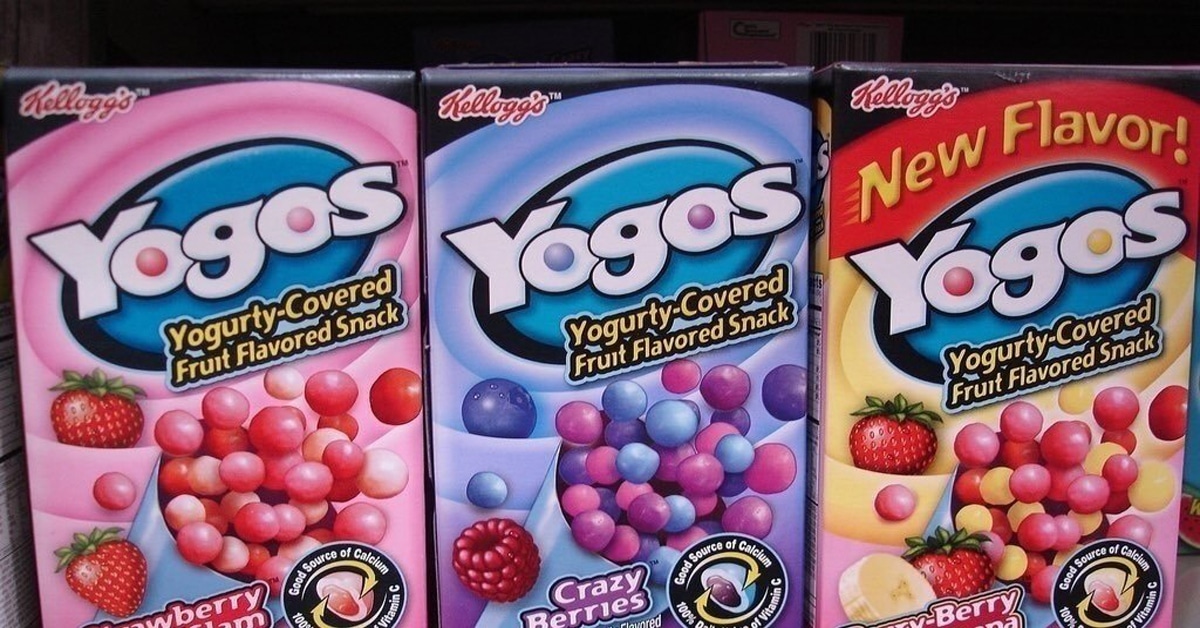Yogos – Nostalgic, Discontinued Jewels From Kellog’s
Did you know that Yogos was considered the snack of the future? Even though they were a 2000s invention, people thought this snack would reshape the future of the snack industry. That’s probably because no one ever knew what they were eating.
Yogos originated somewhere between chewy candy, fruity candy, and yogurt candy. Balls of sweet, fruity delight are the size of a pea and have a tough yogurt covering. Unfortunately, by 2010, the candy had been discontinued.
Please leave a review or any memories of this snack in the comments at the bottom of this page. Thank you!
In the article below, you will find some significant information about the legendary Yogos.
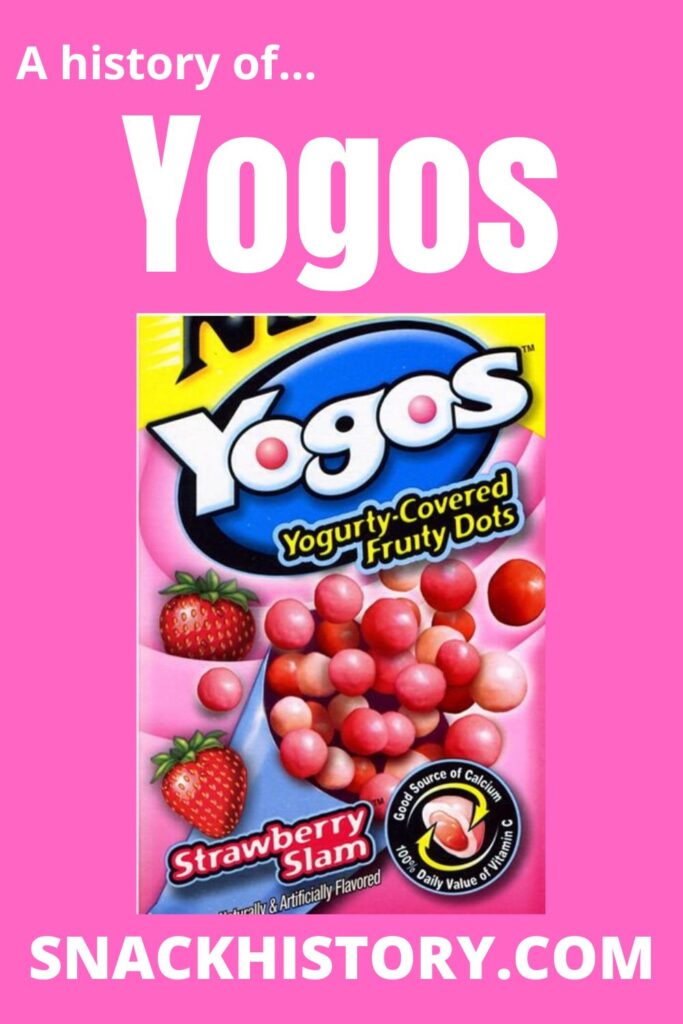
What Are Yogos?
Yogurt balls are the ideal treat if you’re looking for a tasty and nutritious snack. Yogurt is rolled into balls to create these tasty morsels, which may be eaten simply or topped with your preferred toppings. Yogurt balls are low in calories and a fantastic source of calcium and protein. The best part about them is that they just require a few basic materials to prepare them at home.
This tiny bag of Yogos was filled with yogurt balls in the colors pink, light blue, purplish blue, and purple. The yogurt balls were all about the same size, somewhat asymmetrical, and not quite spherical in shape. They all tasted delicious, and people continued attempting to analyze whether the varied colors truly had distinct flavors.
They go by the names “yogurt drops” or “yogurt pearls,” depending on where you are on the globe. Whatever you want to name them, there is no denying how delicious these bite-sized nibbles are.
Yogos are created from a foundation of maize flour that is extruded into the required shapes, and that is how yogurt-coated fruit snacks were created. These forms are then sprinkled with either sugar or tapioca maltodextrin before being covered in yogurt powder for a less sweet option.
However, the study was inconclusive since sometimes they were somewhat different, but other times they all simply appeared the same. The flavor, on the other hand, was not very sweet but kind of sweet.
Why Were Yogos Discontinued?
Unfortunately for those who admired Yogos, today it’s among the list of the most beloved discontinued snacks. But why were Yogos discontinued regardless of their popularity?
It turns out that the snack was too expensive to manufacture and ship from the plant to wholesalers at a grocery shop. Why would they “spend” time and resources creating a product that has a slim chance of making a profit?
Particularly when making cereals from grain and sugar, the profit margin is significantly higher. The tendency for yogurt coatings to deteriorate was yet another problem with Yogos. The supply chain for Kellogg’s could have been better by this.
Low-profit margins are reportedly another factor in this product’s discontinuation. The consumer couldn’t afford the item, and it wasn’t very nutritious. Due to this, no one would have purchased it, and the market would only provide modest profits. It was canceled because the corporation determined it was not a financially successful product.
Will Yogos Ever Come Back?
Yogos gained popularity after making its debut in 2005. However, by the early 2010s, they had to be taken off the market. These yogurt-flavored snacks barely lasted for five years, but they enthralled snackers. In fact, supporters are still not prepared to say goodbye. Yogos are incredibly beloved, as seen by the numerous online petitions pleading with Kellogg’s to bring the fruity treats back. Nearly 16,000 people have signed online petitions, calling for the return of the adored yogurt fruit snack. Still, they haven’t gotten the brand’s attention for now.
Kellogg’s hasn’t shown much optimism about the comeback of these snacks, breaking its Twitter silence only to express gratitude to Yogos fans for their pleas. Hopefully, the plethora of petitions longing for Yogos will keep Kellogg’s attention long enough for them to bring back the delectable snack. While you wait, you could find a hidden supply of Yogos Bits in some stores. If so, buy them quickly as they are the last of a rapidly disappearing species.
The yogurt-based snack, which was recently reintroduced by parent firm General Mills, may be making a comeback. The new Yogurt contains no artificial flavors or colors and is made from natural fruit. Each pack has two servings, and they are available in three flavors: strawberry banana, mango, and mixed berry.
Due to demand, the original Yogos, introduced in 2006 and withdrawn in 2009, was brought back.
An Alternative for Yogos Bits
Even though Yogos Bits were discontinued, there are still plenty of opportunities to replace them with something tasty. In general, yogurt comes in a wide variety of brands and varieties to pick from. Yogurts are not all created equal, though. Some yogurts have no sugar at all, while others have sugar levels that are higher than average.
So what can someone who cares about their health do? Try Yogos Bits if you’re seeking a yogurt that’s high in protein and low in sugar. This yogurt substitute is ideal for people who are lactose intolerant or following a dairy-free diet since it is created with genuine fruit and dairy-free probiotics. Additionally, it doesn’t include any artificial sweeteners, flavors, or added sugars, so you can be confident that you’re getting all the benefits of yogurt without any extraneous additives.
While it’s unlikely to locate the now-prized Yogos for sale, several treats resembling them have appeared. Thank goodness Welch’s Fruit Snacks introduced a snack that evokes the vanished Yogos. The chewy fruit snacks in the Fruit ‘n Yogurt nibbles are topped with creamy yogurt. Even though they might not wholly replace Yogos, they will probably make parents happier.
Nutritional Value Of Yogos
Yogos were just minimally nutritious. 18 g of sugar was included in 80 g of the product. People were upset because you didn’t have much positive to offer to children and adults who consumed this product. After all, it was high in calories and sugar. This indicates that if a person consumed just one pack, it would account for more than half of her daily sugar intake. There were no healthy nutrients in it to make up for the excessive sugar level.
However, a lot of individuals have said that as a candy, its main function was flavor rather than nourishment. Because they really miss the snack, many individuals have urged Kellogg’s to reintroduce it to the market. It provided a fruit punch to the general audience and had a distinct flavor. Yogos does have some market supporters, but more is required if this product is to be lucrative. A huge consumer base is necessary for a product to be profitable.
The oils they utilize in their yogurt are likely another factor in the discontinuation of this candy. Following the snack, many parents claimed that their kids experienced allergies.
Brief History Of Yogos’ Manufacturer
After exploring Yogos product description and history, let’s now briefly talk about the brand that created this impressive snack.
Will Keith Kellogg establish Kellogg’s as the Battle Creek Toasted Corn Flake Company on February 19, 1906, as a result of his and his brother John Harvey Kellogg’s work? They were based at the Battle Creek Sanitarium, which used methods based on the Seventh-day Adventist Christian sect. The business created and sold the very popular Kellogg’s Toasted Corn Flakes, and in 1922 it changed its name to the Kellogg Company.
The Kellogg Company said in 1930 that most of its plants would switch from the customary 40 to 30-hour work weeks. This practice persisted up until World War II, and for a short time afterward. However, some industries and departments continued to need 90-hour work weeks until 1980. Between 1969 and 1977, Kellogg’s purchased a number of minor firms, including Mrs. Smith’s Pies, Eggo, and Pure Packed Foods. However, the company was later criticized for not diversifying more like General Mills and Quaker Oats did.
Kellogg’s U.S. snack market share decreased to a low of 36.7% in 1983 as a result of underinvesting in marketing and product development compared to its rivals. It was described as “a terrific corporation that’s beyond its prime” by a well-known Wall Street analyst, and the cereal industry was seen as “mature.”
Such remarks motivated Kellogg Chairman William E. LaMothe to make improvements, which mostly consisted of reaching out to the 80 million baby boomers rather than promoting cereals for kids. By highlighting the ease of eating cereal and its nutritional benefits, Kellogg was able to convince Americans between the ages of 25 and 49 to eat 26% more cereal than they did five years before.
Ready-to-eat cereal sales in the US increased from $3.7 billion in retail value in 1983 to $5.4 billion in total in 1988, growing three times as quickly as the typical supermarket category. Additionally, Kellogg’s launched fresh goods, including Crispix, Raisin Squares, and Nutri-Grain Biscuits. It also expanded worldwide, with Just Right for Australians and Genmai Flakes for Japanese consumers. General Mills, which primarily sold cereals for kids, and Post, which struggled in the adult cereal business, were the company’s major rivals at this time.
Logo
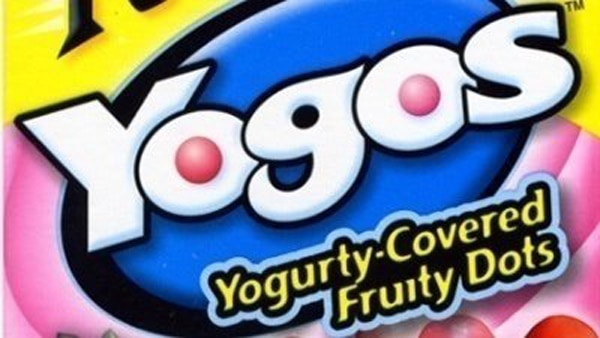
Ingredients
- Contains milk and soy ingredients
- Sugar
- Coating
- Sugar
- Partially Hydrogenated Palm Kernel and Palm Oil (Less than 0.5 g Trans Fat Per Serving)
- Calcium Carbonate
- Nonfat Yogurt Powder
- Cultured Whey Protein Concentrate
- Cultured Skim Milk
- Yogurt Culture
- Nonfat Milk
- Reduced Mineral Whey
- Color Added
- Soy Lecithin
- Natural and Artificial Flavor
- Salt
- Corn Syrup
- Modified Corn Starch
- Apple Puree Concentrate
- Contains Two Percent or Less of Water
- Pectin
- Cornstarch
- Ascorbic Acid (Vitamin C)
- Citric Acid
- Sodium Citrate
- Natural and Artificial Flavor
- Malic Acid
- Color Added
- Carnauba Wax
- Blue No 2 Lake
- Carmine Color
- Red No 40
- Blue No 1
- Red No 40 Lake
Nutrition
| Serving Size: | 1 Pouch (0.8 oz) | % Daily Value* |
| Amount Per Serving | ||
| Calories | 90 | |
| Fat | 1.5g | |
| Carbs | 18g | |
| Fiber | 0g | |
| Protein | 0g | |
| Total Fat | 1.5g | 2% |
| Saturated Fat | 1.5g | 8% |
| Trans Fat | 0g | |
| Cholesterol | 0mg | 0% |
| Sodium | 15mg | 1% |
| Total Carbohydrate | 18g | 6% |
| Dietary Fiber | 0g | 0% |
| Sugars | 15g | |
| Protein | 0g | |
| Calcium | 100mg | |
| Alcohol | 0g | |
| Iron | 0mg | |
| Vitamin A | 0mg | |
| Vitamin C | 60mg |
Pictures
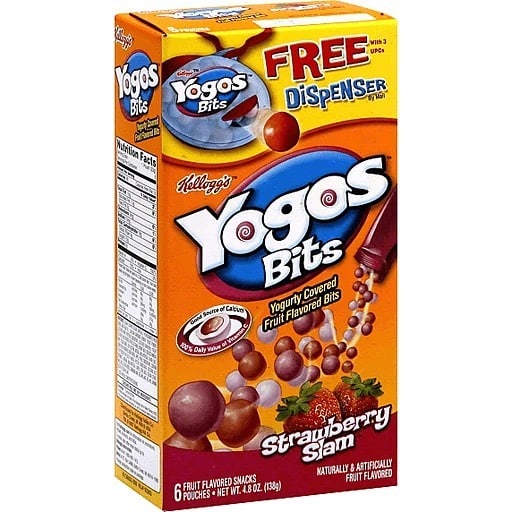
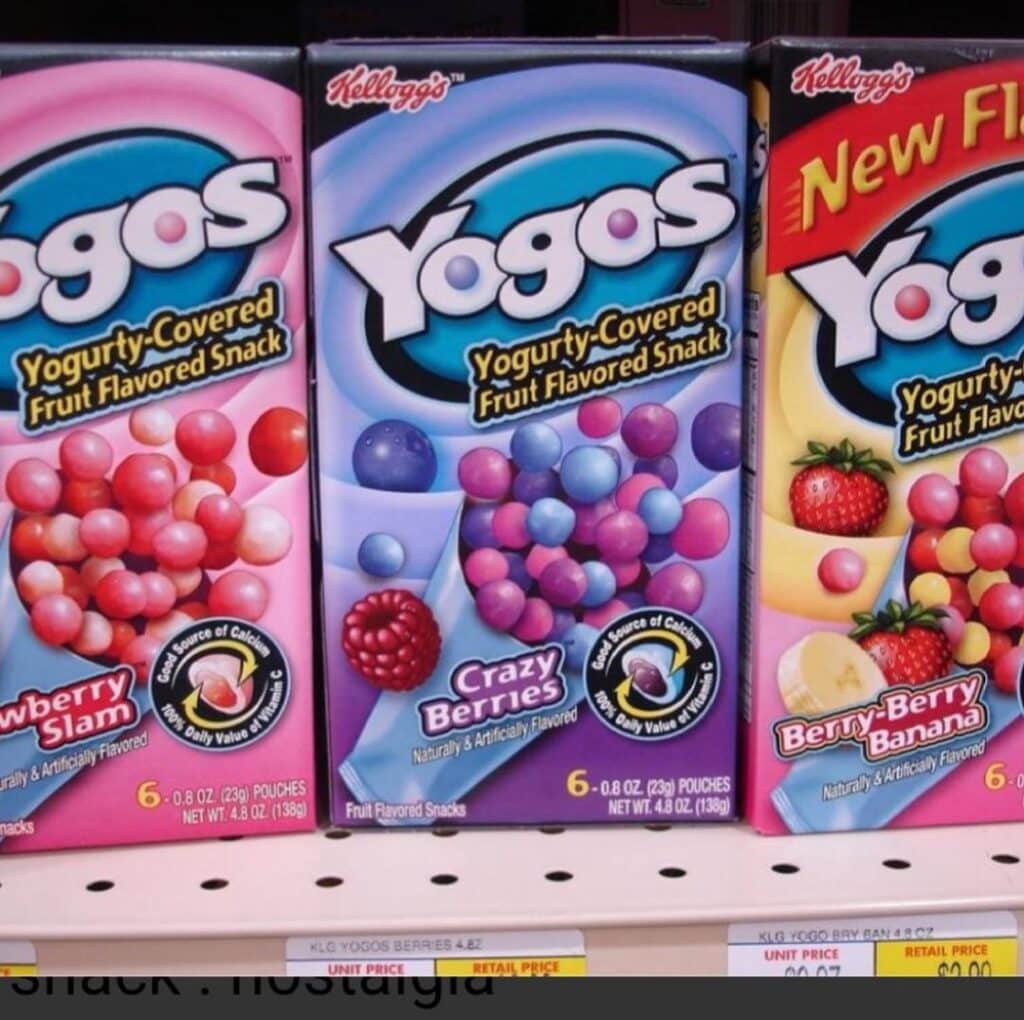
Commercials
Bottom Line
The tastes of Yogos astonished kids with clever names like Berry-Berry Banana and Crazy Berries. They became the trendy, chic treat that every child yearned to flaunt in the cafeteria. The space-themed snack was a hit with youngsters of all ages thanks to the crazy colors and ball forms. That’s why many people still say that Yogos are one of the many undiscovered jewels on the planet.

Nato is a content writer and researcher with a background in psychology. She’s passionate about writing about the candy industry and exploring the cultural significance of sweets and treats. She believes that the stories behind our favorite snacks can reveal a great deal about our values.
Please leave a review or any memories of this snack in the comments below. Thank you!
Click here for a full A-Z list of Snacks and Candy
